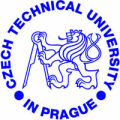


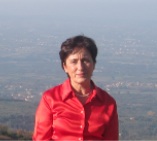
Keynote Speaker
Professor Eleni Karatza
Department of Informatics
Aristotle University of Thessaloniki
Greece
Cloud Computing for Enterprises - Advanced Challenges and Research Trends
Computational and data clouds are large-scale distributed systems used for serving demanding applications. Cloud computing is a concept that has emerged from grid computing; it provides users the ability to acquire computational resources on demand from its virtually infinite pool on a pay-as-you-go basis.
The cloud computing paradigm can offer various types of services, such as computational resources for high-performance computing (HPC) applications, web services, social networking, etc.
For many years now, the use of HPC has become important in the enterprise. Companies need to process large amounts of data and realise that they need HPC for success of their business. While large enterprises have budget for a HPC system, smaller companies usually do not have enough funds to deploy such solutions. However, they can extend their computing provision by consuming Cloud services.
In this talk we will present issues that must be addressed in order to make clouds viable for enterprise HPC, and will review research, based on existing or simulated cloud systems, that provide insight into problems solving. Advanced modeling and simulation techniques are a basic aspect of performance evaluation that is needed before the costly prototyping actions required for cloud systems.
Short Bio
Eleni D. Karatza is a Professor in the Department of Informatics at the Aristotle University of Thessaloniki, Greece. Dr. Karatza's research interests include Computer Systems Modeling and Simulation, Performance Evaluation, Grid and Cloud Computing, Energy Efficiency in Large Scale Distributed Systems, Resource Allocation and Scheduling and Real-time Distributed Systems.
Dr. Karatza has authored or co-authored over 180 technical papers and book chapters including four papers that earned best paper awards at international conferences. She is senior member of IEEE, ACM and SCS and she served as an elected member of the Board of Directors at Large of the Society for Modeling and Simulation International (2009-2011). She has served as Program Chair and Keynote Speaker in International Conferences and she is Editor-in-Chief of the Elsevier Journal "Simulation Modeling Practice and Theory" and Area Editor of the "Journal of Systems and Software" of Elsevier.
Professor Eleni Karatza Homepage.
Past Keynote Speakers
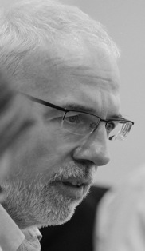
2011
Professor Terry Young
Department of Information Systems and Computing
Brunel University
United Kingdom
Information in healthcare: science, system, or service? (Powerpoint)
An abstract of the keynote presentation will be provided soon.Short Bio
Professor Terry Young joined Brunel as Professor of Healthcare Systems after a 16.5 year career in industry, which started in broadband research and led in the end to healthcare strategy.
His initial research, after a PhD in laser spectroscopy, lay in finite element modelling of photonic devices and optical circuits. Later, with project and line management, his experience broadened to include business development and corporate technology strategy, mainly in healthcare.
In 2001 he joined Brunel University and he has focused on healthcare since then, winning more than £13M in Research Council grants. The largest of these, MATCH, involves three other universities (Birmingham, Nottingham and Ulster) and looks at the value of technology to care delivery. Another recent project, RIGHT, involved four other universities (Cambridge, Cardiff, Southampton and Ulster) and explored the use of simulation and modelling in service provision.
His recent publications address healthcare delivery in terms of services, systems and technology, including commercial and investment decisions, uptake and adoption.
Professor Terry Young Homepage.
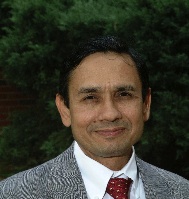
2011
Professor Ramesh Sharda
Institute for Research in Information Systems
Oklahoma State University
USA
RFID Implementation: Recent Research and Opportunities (Powerpoint)
Organizations around the world are exploring the potential of RFID technologies. The additional visibility provided by RFID tags can assist in improving inventory accuracy, scheduling production, and retail store activities among a whole host of applications. However, the costs of RFID technologies can sometimes make it difficult to justify such actions. Our research team has investigated the potential of RFID in several settings: inventory management, retail marketing, job shop scheduling, lean manufacturing, distribution centers, and cold supply chain. We employ several research methodologies: simulation, systems dynamics, real options theory, empirical analysis of real data, and delphi studies of experts. In, this presentation we review several of these research projects to provide a comprehensive framework of recent RFID research and discuss opportunities for further research.Short Bio
Professor Ramesh Sharda is Director of the Institute for Research in Information Systems (IRIS) , ConocoPhillips Chair of Management of Technology, and a Regents Professor of Management Science and Information Systems in the Spears School of Business at Oklahoma State University. His research has been published in major journals in management science and information systems including Management Science, Information Systems Research, Decision Support Systems, Interfaces, INFORMS Journal on Computing, Computers and Operations Research, and many others. His coauthored text book (Decision Support and Business Intelligence Systems by Turban/Sharda/Delen, 9th edition, Prentice Hall) has just been released. He serves on the editorial boards of journals such as the INFORMS Journal on Computing, Decision Support Systems, Information Systems Frontiers, and OR/MS Today. Ramesh is also a cofounder of a company that produces virtual trade fairs, iTradeFair.com.Professor Ramesh Sharda Homepage.

2010
Professor Wil van der Aalst
Department of Mathematics and Computer Science
Eindhoven University of Technology
The Netherlands
Business Process Simulation Revisited (PowerPoint Slides)
Although simulation is typically considered as relevant and highly applicable, in reality the use of simulation is limited. Many organizations have tried to use simulation to analyze their business processes at some stage. However, few are using simulation in a structured and effective manner. This may be caused by a lack of training and limitations of existing tools, but in this talk we will argue that there are also several additional and more fundamental problems. First of all, the focus is mainly on design while managers would also like to use simulation for operational decision making (solving the concrete problem at hand rather than some abstract future problem). Second, there is limited support for using existing artifacts such as historic data and workflow schemas. Third, the behavior of resources is modeled in a rather naive manner. This keynote will discuss these problems and show solutions that are based on using process mining results and improved modeling of resources. By incorporating better resource characterizations in contemporary tools, business process simulation can finally deliver on its outstanding promise.Short Bio
Prof.dr.ir. Wil van der Aalst is a full professor of Information Systems at the Technische Universiteit Eindhoven (TU/e) having a position in both the Department of Mathematics and Computer Science and the Department of Technology Management. Currently he is also an adjunct professor at Queensland University of Technology (QUT) working within the BPM group there. His research interests include workflow management, process mining, Petri nets, business process management, process modeling, and process analysis. Wil van der Aalst has published more than 115 journal papers, 15 books (as author or editor), 230 refereed conference/workshop publications, and 40 book chapters. Many of his papers are highly cited (he has an H-index of more than 70 according to Google Scholar, making him the Dutch computer scientist with the highest H-index) and his ideas have influenced researchers, software developers, and standardization committees working on process support. He has been a co-chair of many conferences including the Business Process Management conference, the International Conference on Cooperative Information Systems, the International conference on the Application and Theory of Petri Nets, and the IEEE International Conference on Services Computing. He is also editor/member of the editorial board of several journals, including the Distributed and Parallel Databases, the International Journal of Business Process Integration and Management, the International Journal on Enterprise Modelling and Information Systems Architectures, Computers in Industry, Business & Information Systems Engineering, IEEE Transactions on Services Computing, Lecture Notes in Business Information Processing, and Transactions on Petri Nets and Other Models of Concurrency. He is also a member of the Royal Holland Society of Sciences and Humanities (Koninklijke Hollandsche Maatschappij der Wetenschappen). For more information about his work visit: www.workflowpatterns.com, www.workflowcourse.com, www.processmining.org, www.yawl-system.com, Professor Wil van der Aalst Homepage.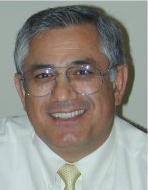
2009
Professor Osman BALCI
Department of Computer Science
Virginia Polytechnic Institute and State University (Virginia Tech)
USA
A Life Cycle for Modeling and Simulations
Conducting a successful Modeling and Simulation (M&S) project poses significant challenges for engineers, analysts, managers, stakeholders, and sponsors. The use of an effective life cycle is critically important to meet the challenges. This keynote speech presents a comprehensive M&S life cycle created by the speaker. The M&S life cycle describes the blueprint (detailed plan or program of action) of an M&S application during its lifetime (from birth to retirement), and provides structured guidance to an M&S developer (engineer), analyst, manager, organization, and community of interest. The M&S life cycle specifies the work products to be created under the designated processes together with the integrated verification and validation and quality assurance activities. The M&S life cycle is critically needed to modularize and structure the M&S development and provide valuable guidance for project management. The M&S life cycle also identifies areas of expertise in which to employ qualified people. This keynote speech identifies which process to execute first to start an M&S project, which processes to execute one after the other, and which work products to produce one after the other throughout the entire life cycle until the project is successfully completed. The knowledge of such a comprehensive M&S life cycle is crucially needed to be able to conduct a successful M&S project.
Short Bio
OSMAN BALCI is a Professor of Computer Science at Virginia Polytechnic Institute and State University (Virginia Tech), USA. He received B.S. and M.S. degrees from Bogaziçi University (Istanbul) in 1975 and 1977, and M.S. and Ph.D. degrees from Syracuse University (New York) in 1978 and 1981. Dr. Balci serves as ACM SIGSIM Chairman (2008-2011) and Editor-in-Chief of ACM SIGSIM M&S Knowledge Repository. He served as the Editor-in-Chief of two international journals: Annals of Software Engineering (1993-2002) and World Wide Web (1996-2000). He currently serves as an Area Editor of ACM Transactions on Modeling and Computer Simulation and Modeling and Simulation (M&S) Category Editor of ACM Computing Reviews. He served as an elected Director at Large of the Society for M&S International (2002-2006). Most of Dr. Balci's work has been funded by the U.S. Navy since 1983. From 1998 to 2004, he provided technical services for the U.S. National Missile Defense and Missile Defense Agency programs in the areas of M&S verification, validation and accreditation (VV&A) and complex system independent verification and validation (IV&V). His current areas of expertise center on network-centric software engineering; architecting network-centric software-based systems; software IV&V; M&S methodology; M&S VV&A, testing, certification, credibility assessment, and quality assessment.
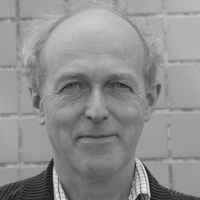
2008
Professor Jan DietzDepartment of Information Systems
Delft University of Technology
The Netherlands
On the Nature of Business Rules
Business rules are in the center of attention, both in the 'business world' and in the 'ICT applications world'. Recently, the OMG has completed a major study in defining the notion of business rule and its associated notions. On closer look, however, the definitions provided appear to be not as rigid and precise as one would hope and as deemed necessary. Based on the consistent and coherent theoretical framework of Enterprise Ontology, several clarifications of the core notions regarding business rules are presented. They are illustrated by means of a small example case.Short Bio
Jan Dietz is a Professor of Information Systems Design at Delft University of Technology.Jan Dietz is the spiritual father of DEMO (Design & Engineering Methodology for Organizations) and co-founder and chairman of the DEMO Knowledge Center (www.demo.nl). He started development of DEMO theory and methodology in early 90s that become a major methodology resulting in numerous applied projects, funded projects, PhD dissertation, and post-Doctoral research projects.
Also in this area, he has published over 200 scientific and professional papers as well as several books. He has been the Dutch national representative in IFIP TC8 (Information Systems) for many years and is member of IFIP WG8.1 (Design and Evaluation of Information Systems).
He has published a book on Enterprise Ontology, and is working on a book on Enterprise Architecture.
robert.pergl@fit.cvut.cz | T +420 777 042 249
Copyright © 2008-2014 AIS SIGMAS


